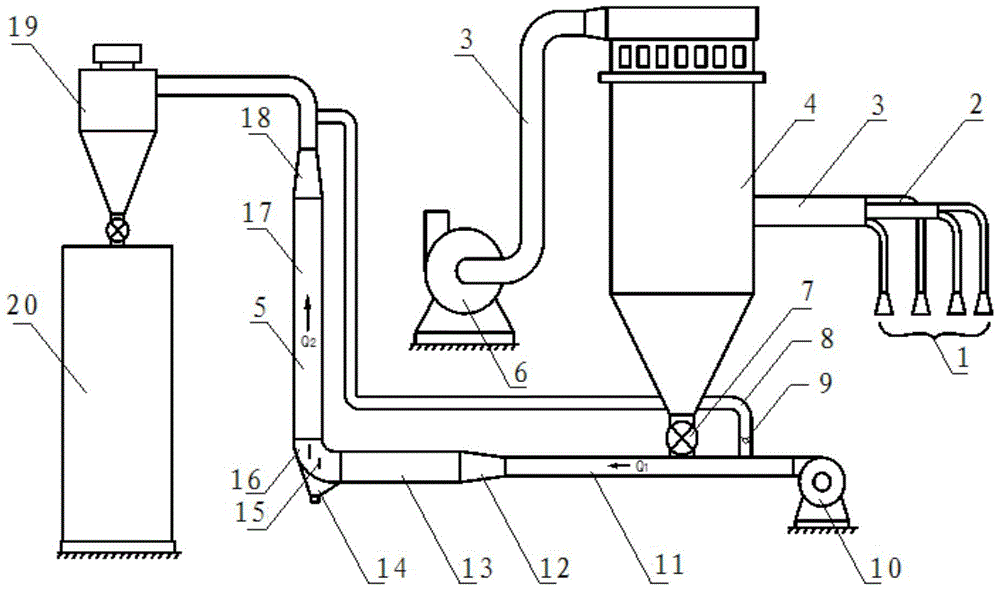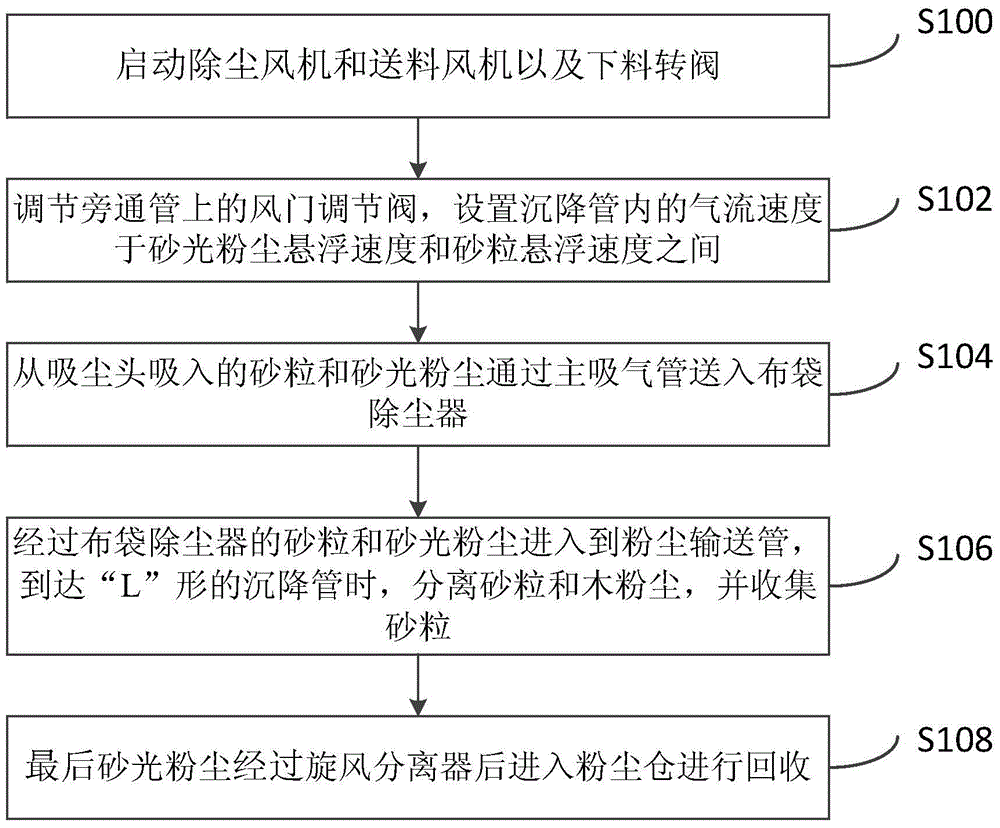A fiberboard sanding dust recycling machine for automatically separating sand particles and a recycling method
A fiberboard and recycling machine technology, applied in separation methods, dispersed particle separation, chemical instruments and methods, etc., can solve the problems of sanding off the sanding belt, rough sanding effect of the board surface, and high price of the sanding belt.
- Summary
- Abstract
- Description
- Claims
- Application Information
AI Technical Summary
Problems solved by technology
Method used
Image
Examples
Embodiment Construction
[0025] The specific embodiments of the present invention will be described in detail below in conjunction with the accompanying drawings, but it should be understood that the protection scope of the present invention is not limited by the specific embodiments.
[0026] Unless expressly stated otherwise, throughout the specification and claims, the term "comprise" or variations thereof such as "includes" or "includes" and the like will be understood to include the stated elements or constituents, and not Other elements or other components are not excluded.
[0027] First of all, the suspension speed difference separation method adopted for the separation of sand grains and sanding dust in the conveying pipeline in the embodiment of the present invention is introduced as follows:
[0028] In air, the air velocity V that can lift objects into the air without falling s is called the levitation velocity of the object. It is known from physics that the suspension velocity of parti...
PUM
 Login to View More
Login to View More Abstract
Description
Claims
Application Information
 Login to View More
Login to View More - R&D
- Intellectual Property
- Life Sciences
- Materials
- Tech Scout
- Unparalleled Data Quality
- Higher Quality Content
- 60% Fewer Hallucinations
Browse by: Latest US Patents, China's latest patents, Technical Efficacy Thesaurus, Application Domain, Technology Topic, Popular Technical Reports.
© 2025 PatSnap. All rights reserved.Legal|Privacy policy|Modern Slavery Act Transparency Statement|Sitemap|About US| Contact US: help@patsnap.com



